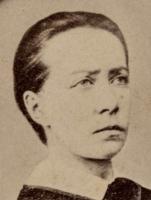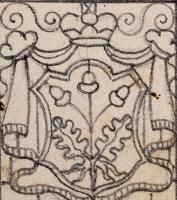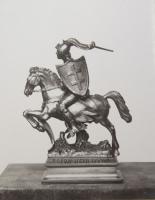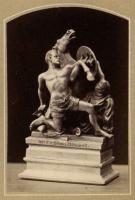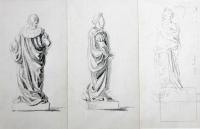About the exhibition
LMAVB RS F320-981, lap. 1r
On September 12, 1683, the armed forces led by Jan III Sobieski, ruler of the Polish-Lithuanian Commonwealth, battled the army of the Ottoman Empire at Vienna, achieving a historic victory that would call a halt to the Ottoman advance into Central Europe. 180 years later, when the Commonwealth had already vanished from the European political map, Helena Skirmuntt (sometimes Skirmunttowa or Skirmunt; 1827–1874), an artist and sculptor little known at the time, had an idea to create a visualization of the Battle of Vienna on the board of a popular intellectual game, chess. The work on the chess set was never completed because of the sculptor’s early death. She only made 21 pieces out of the planned 32. In 1873, the little sculptures (except for the last one) were exhibited at the World Exhibition in Vienna. They are now kept in Poland, at the National Museum in Krakow.
In 1883, in preparation for the 200th anniversary of the Battle of Vienna, the photographic studio of Julian Kostka and Ludwik Mulert published a collection of photographs of the chess pieces in collaboration with the lithographic printing house of Maksymilian Fajans. Valuable copies of this publication are kept in the Rare Books Department of the Wroblewski Library of the Lithuanian Academy of Sciences.
Old photographs of the sculptures and a set of sketches of the chess pieces, whose existence was not even suspected for a long while, are the focus of the virtual exhibition Helena Skirmuntt: “It Might Be the Best Thing I Have Ever Created…”. The story of the chess set, which one of the sculptor’s contemporaries called “a historical poem”, is complemented by the artist’s biography illustrated with images from the collections of the Manuscripts Department.
Helena Skirmuntt was a member of a prominent noble family from the Ruthenian part of the Grand Duchy of Lithuania (present-day Belarus), occupied by the Russian Empire. Helena was a liaison for the insurgents in 1863–1864, exile, diarist, mother of four, woman of poor health but strong will. A talented artist, she felt an inexorable urge for artistic creation. Unable to acquire a consistent academic education in art schools, which was a strictly male privilege at the time, she challenged gender stereotypes by studying painting and sculpture privately in Vilnius, Berlin, Dresden, Vienna, and Rome. Today she is hailed as the first professional female sculptor in the entire territory of the former Polish-Lithuanian Commonwealth. The virtual exhibition commemorates the 150th anniversary of her death.
Exhibition design and the texts by Ingrida Pajedaitė (Manuscripts Department of the Wroblewski Library of the Lithuanian Academy of Sciences)
Photographs by Vika Petrikaitė and Valentina Marmienė
Translated into English by Ana Venclovienė
Posted online by Audronė Steponaitienė

